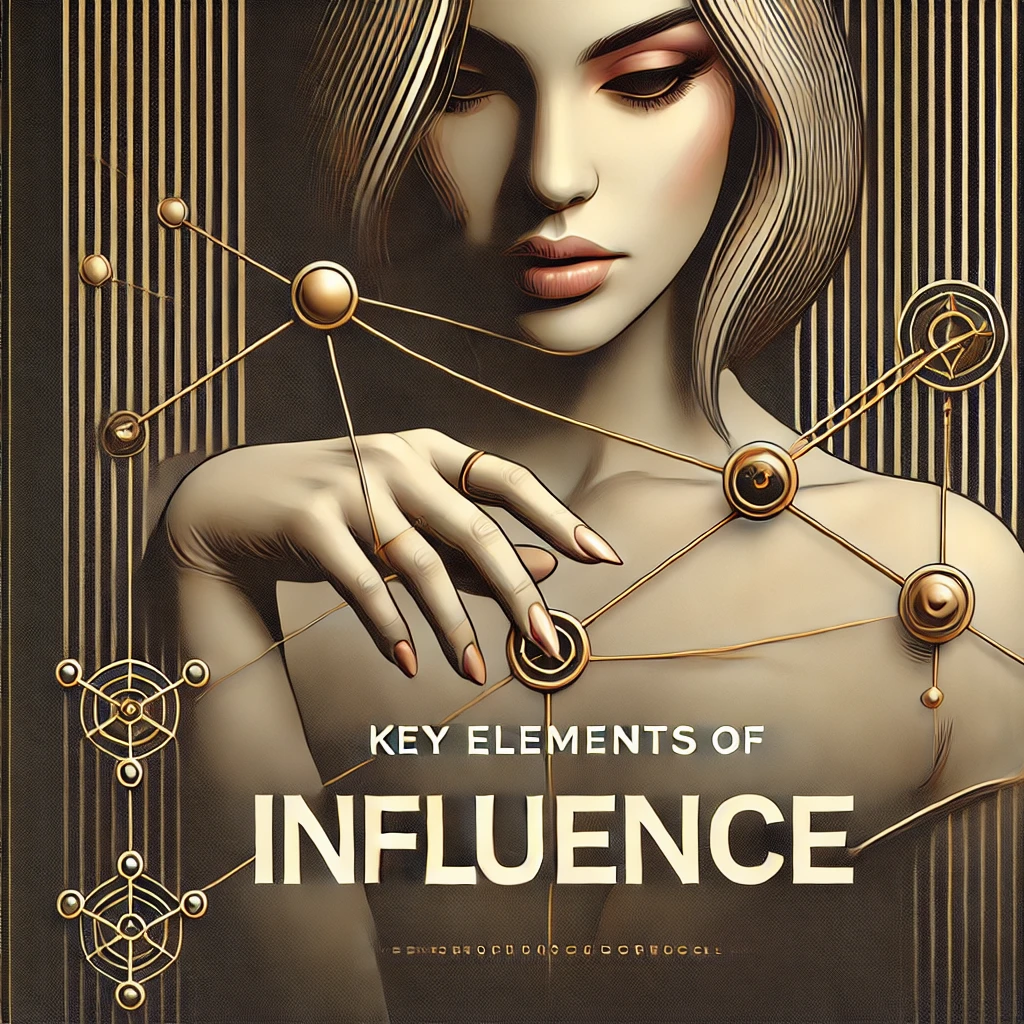When it comes to relationships, we all want a certain level of influence over our partner’s actions, decisions, and emotions. After all, relationships are about mutual give and take, right? But at what point does influence become manipulation? Where’s the line between gently guiding your partner and controlling them? These are the provocative questions explored in Chapter 10 of “Mastering Him: The Secret Art of Gentle Control in Relationships.” And trust me, the answers may not be what you expect.
Most people think of manipulation as an inherently bad thing—a tactic used by people who are selfish, controlling, or emotionally abusive. But Chapter 10 argues that manipulation and influence aren’t as far apart as we’d like to believe. In fact, the same tools used for healthy influence can easily become forms of manipulation if wielded carelessly. What really matters is your intent, the impact on your partner, and how openly the dynamics are handled.
In this controversial chapter, you’ll be forced to question your own approach to relationships. Are you influencing your partner in subtle, productive ways? Or are you unknowingly stepping into manipulative territory? Let’s dive deep into this gray area and explore where influence ends and manipulation begins.
What’s the Difference Between Influence and Manipulation?
The terms influence and manipulation are often used interchangeably, but there are key differences—especially when it comes to relationships. At its core, influence is about guiding someone toward a desired outcome while respecting their autonomy and feelings. Manipulation, on the other hand, is about controlling someone in a way that benefits you, often without their knowledge or consent.
But here’s the controversial part: influence and manipulation often use the same techniques. Whether it’s framing a conversation to get the result you want, using positive reinforcement to encourage certain behaviors, or even subtly guiding someone’s decisions over time, the line between influence and manipulation is thin. The difference often comes down to intent and transparency.
When Influence Becomes Manipulation: The Slippery Slope
It’s easy to tell yourself that you’re just influencing your partner, especially if you believe that the outcome is in their best interest. But what happens when your actions start to infringe on their autonomy? Let’s explore some real-life examples where influence can easily slip into manipulation.
Example 1: The Positive Reinforcement Trap
Positive reinforcement is a classic influence tactic—rewarding behaviors that you want to see more of. Done right, it can encourage healthy habits and deepen your bond. But what happens when it’s used to shape someone into a version of themselves that only serves your needs?
Influence:
You praise your partner whenever they make an effort to be more affectionate or help around the house. Over time, they naturally become more proactive because they feel appreciated, and your relationship grows stronger as a result.
Manipulation:
You use positive reinforcement to steer your partner away from behaviors that you find inconvenient, like spending time with friends or pursuing hobbies that don’t include you. Slowly, they start to give up parts of themselves to gain your approval, not realizing that they’re being molded to fit your ideal.
Example 2: Framing Conversations for Control
Framing a conversation is a subtle way to influence your partner’s decisions without directly telling them what to do. It’s all about presenting the options in a way that guides them toward the choice you want.
Influence:
You want to move to a new city, but you know your partner is hesitant. Instead of forcing the issue, you frame the conversation by talking about the benefits—career opportunities, new adventures, a fresh start. They feel more open to the idea because they see the positives, and ultimately, the decision feels mutual.
Manipulation:
You selectively omit key details that might sway your partner’s decision the other way. You downplay the risks, exaggerate the benefits, or dismiss their concerns, steering them toward the decision you’ve already made for them. They might not even realize they’ve been manipulated until they’re in too deep.
The Ethics of Influence: Where Do You Stand?
Chapter 10 doesn’t shy away from the hard questions: Is it ever okay to manipulate your partner if the end goal benefits both of you? This is where things get messy. Influence might seem like a kinder, more ethical approach to getting what you want in a relationship, but what happens when your version of “what’s best” doesn’t align with your partner’s?
Consider this: in almost every relationship, there’s some level of manipulation at play. Whether it’s conscious or not, we all shape our partners’ decisions, thoughts, and behaviors to some degree. The real ethical question is whether you’re doing it in a way that respects their autonomy and ensures their well-being—or if you’re crossing the line into control.
How to Avoid Manipulation in Your Relationship
If you’re wondering where you stand on the influence-manipulation spectrum, here are some key questions to ask yourself:
- Am I respecting my partner’s autonomy?
Influence becomes manipulation when you start taking away your partner’s freedom to make their own choices. Are you guiding them, or are you controlling them? - Am I being transparent?
One of the hallmarks of manipulation is secrecy. If you’re hiding your intentions, using deceit, or withholding information to get your way, you’re not influencing—you’re manipulating. - Is this benefiting both of us?
True influence in a relationship should benefit both partners. If your actions are designed to serve only your needs or desires, you’ve crossed into manipulation. - How does my partner feel?
A healthy relationship is built on open communication and mutual respect. If your partner feels manipulated, controlled, or pressured, it’s time to reassess your approach.
The Controversial Take: Manipulation Isn’t Always Evil
Here’s where Chapter 10 gets truly provocative: manipulation isn’t always evil. The book makes the case that gentle manipulation—done with good intentions and a deep understanding of your partner’s needs—can sometimes lead to better outcomes for both of you. The key is knowing where to draw the line and ensuring that your partner’s well-being is always at the forefront of your actions.
So, where do you stand? Are you a master of subtle influence, or are you flirting with manipulation? “Mastering Him” challenges you to take a hard look at your relationship and determine whether your actions are truly in the best interest of both you and your partner.
Q&A:
- Q: What is the difference between influence and manipulation in relationships?
A: Influence is about guiding someone with respect for their autonomy, while manipulation involves controlling them, often for personal gain. The distinction lies in intent and transparency. - Q: How can I tell if I’m influencing or manipulating my partner?
A: Reflect on your intent: are you encouraging them for mutual benefit or subtly controlling them to meet only your needs? Transparency and respect for their autonomy are key. - Q: What are examples of influence vs. manipulation in a relationship?
A: Using positive reinforcement to encourage healthy habits can be influence, while using praise to discourage behaviors inconvenient to you can verge on manipulation. - Q: When does influence in a relationship become manipulation?
A: Influence turns to manipulation when autonomy is compromised, motives are hidden, or actions primarily benefit one person over the other. - Q: Is it ethical to influence a partner in a relationship?
A: Ethical influence respects both partners’ well-being and maintains transparency. Problems arise when the influence is deceptive or disregards the partner’s autonomy. - Q: Can manipulation ever be beneficial in relationships?
A: Gentle, well-intentioned manipulation may sometimes foster harmony, but it’s a slippery slope. It’s crucial to prioritize mutual respect and open communication. - Q: How can I avoid manipulating my partner?
A: Self-awareness and honest communication help prevent manipulation. Ensure that any influence you exert benefits both of you and respects their freedom of choice. - Q: Why is manipulation in relationships often seen as negative?
A: Manipulation often involves hidden motives and exploits the partner’s vulnerabilities, which can erode trust and harm the relationship in the long run. - Q: What are the risks of manipulation in relationships?
A: Manipulation can lead to resentment, loss of trust, and a power imbalance, often leaving the manipulated partner feeling controlled or undervalued. - Q: How can understanding influence vs. manipulation improve my relationship?
A: Knowing the difference allows you to create a healthier dynamic based on mutual respect, where both partners can grow together without crossing boundaries.
Ready to Master the Art of Influence in Your Relationship?
If you’re ready to dive deeper into the gray areas of influence vs. manipulation and learn how to wield power in your relationship with care and precision, it’s time to pick up “Mastering Him: The Secret Art of Gentle Control in Relationships.” Chapter 10 is where you’ll uncover the truth about the tactics you’re already using, whether you realize it or not.
This isn’t just another relationship guide—it’s your key to understanding the delicate balance between guiding your partner and controlling them. Get your copy today and start mastering the art of subtle control in your relationship—because knowing the difference between influence and manipulation is the key to creating lasting harmony and connection.
Read more about the book: https://developmentpill.com/mastering-him-the-secret-art-of-gentle-control-in-relationships-a-guide-to-influence-hell-never-see-coming/
Book Link: https://www.amazon.com/dp/B0DKKGLZQ9
Book Link UK: https://www.amazon.co.uk/dp/B0DKKGLZQ9



